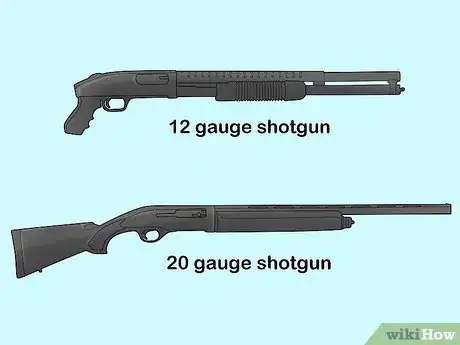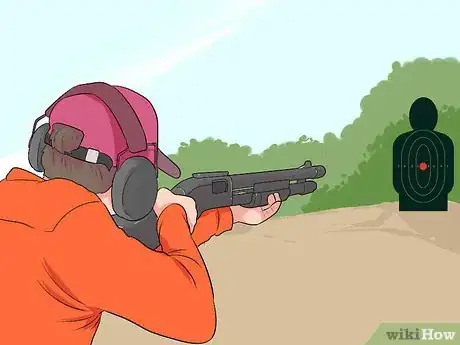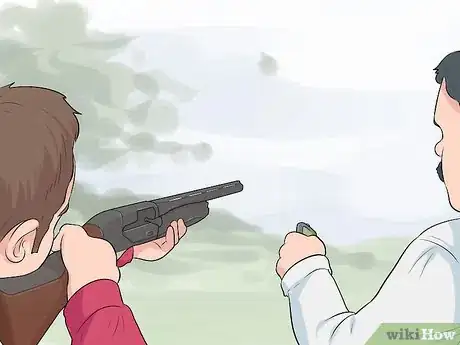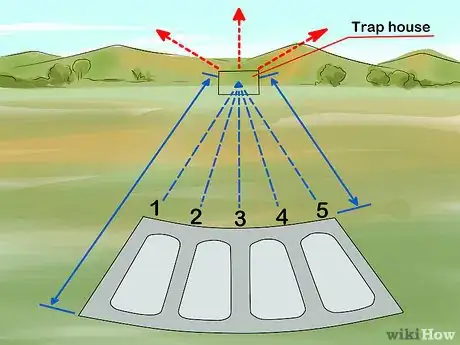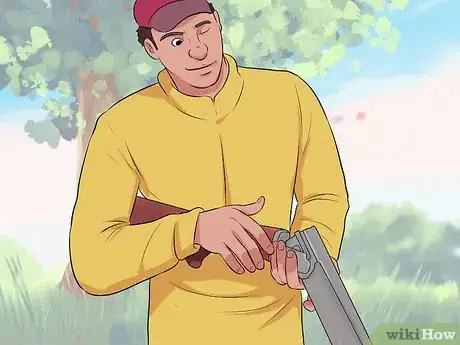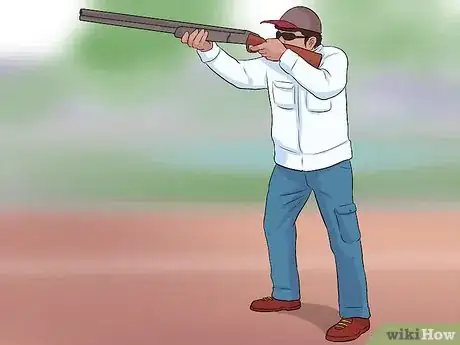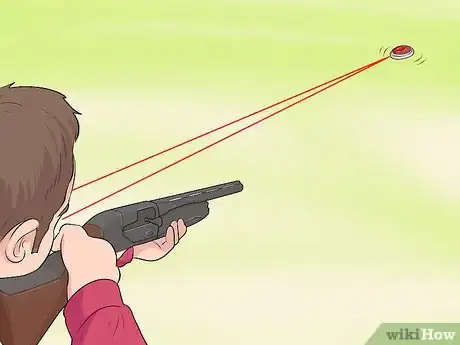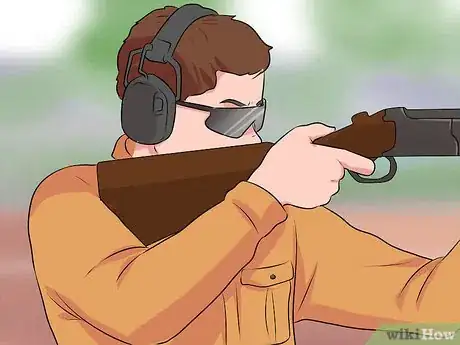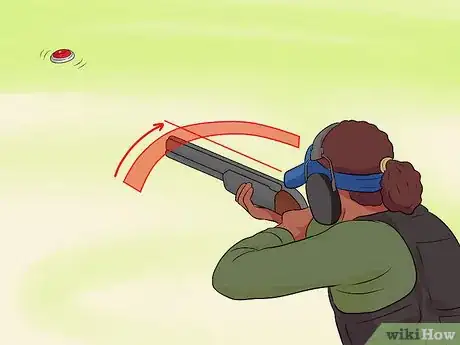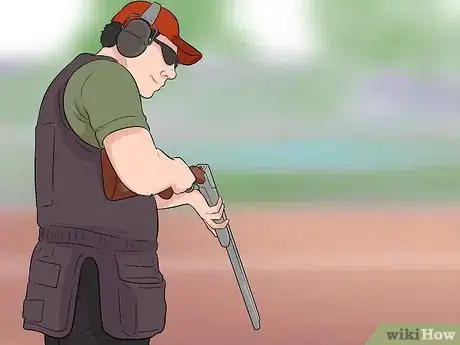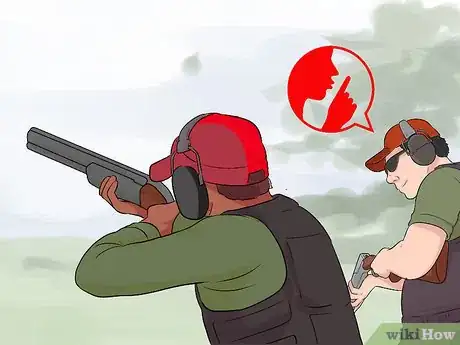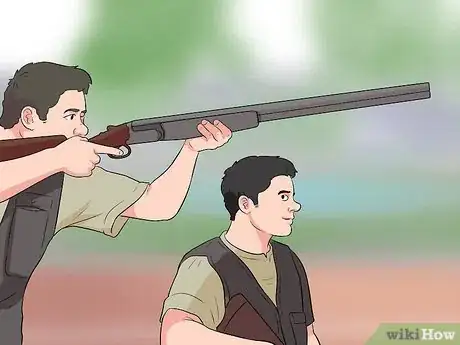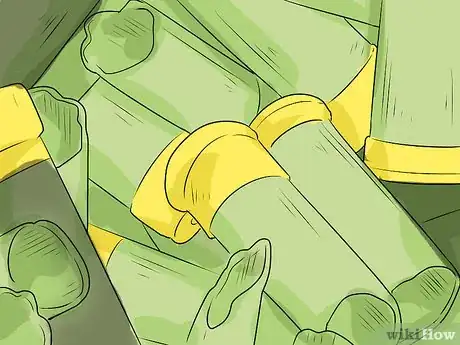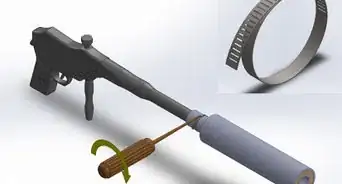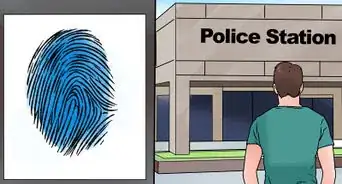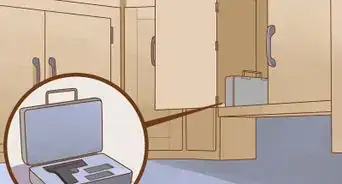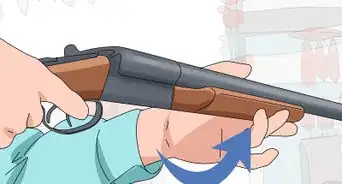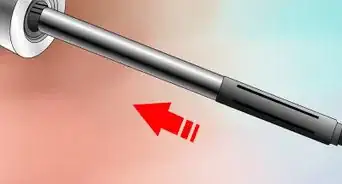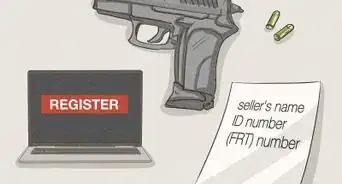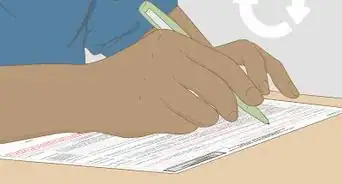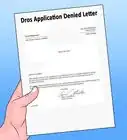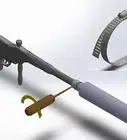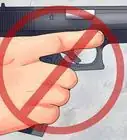This article was co-authored by wikiHow Staff. Our trained team of editors and researchers validate articles for accuracy and comprehensiveness. wikiHow's Content Management Team carefully monitors the work from our editorial staff to ensure that each article is backed by trusted research and meets our high quality standards.
This article has been viewed 26,044 times.
Learn more...
Trap shooters take aim at clay birds (palm-sized discs) that are released into the air. Your goal is to shoot each of these birds out of the sky as you travel to 5 different shooting stations. To become a successful trap shooter, you’ll want a quality shotgun that you feel comfortable handling. When you step up to shoot, place the shotgun against your shoulder firmly and adopt a boxer’s stance. Yell “pull” and the bird will be released. Track it across the sky and take it down.[1]
Steps
Prepping for Shooting
-
1Choose a 12 or 20 gauge shotgun. You can go with a pump action, which is easy to load and unload. A semi-automatic is a good option if you plan to shoot for extended periods of time. You can even go with a double-barreled gun, although you only need to one shot at a time.[2]
- It’s very important to get comfortable handling, loading, and shooting your gun. You might want to practice on the range with a certain model of shotgun before making a final purchase.
- It’s a good idea to get a barrel length of at least 26 inches (66 cm). This will help to improve the accuracy of your shooting.
-
2Take a gun safety course. If you are not an experienced shooter, before you attempt trapshooting, enroll in a short, introductory gun class. These courses are often taught at gun ranges and can teach you how to safely handle your gun around other people. You’ll also learn how to load and unload your weapon, actions that you can refine with more practice.[3]
- Many gun club operators will be happy to show you the basics of trapshooting as well, if asked. They can show you how to correctly transition from station to station while shooting.
Advertisement -
3Practice at home with an unloaded gun or your finger. Go outside, stand facing a wall, and get a friend to use a laser pointer to imitate the trajectory of a clay target. You can then stand in your shooting position and simply track the laser dot with your pointer finger, just as you would with the tip of your shotgun.
- You can also use an unloaded shotgun for this exercise, but you have to double-check that your gun is empty.
- There are also laser training devices that fit on the end of shotguns and project a series of dots outward. You can then work on the pattern of loading, firing, and reloading.
-
4Understand the shooting layout and sequence for competitions. For each round of trap, you’ll shoot at a total of 25 targets divided into 5 shooting stations and positions. You rotate with your team members at each station until you’ve each taken 5 shots. Then, your entire team moves together to the next station in the sequence.[4]
- Most competitive trap shooting squads contain 5 members. However, it’s possible to shoot a round on your own or even with 1 partner. You can also always practice trap shooting by yourself outside of a competitive setting.
- A standard trap shooting competition consists of multiple rounds. So, you may end up shooting between 100 to 200 rounds throughout the day.
Taking Your Shot
-
1Follow basic safety practices. Always check to be sure that the weapon is unloaded and that the safety is on. Keep your gun pointed toward the ground when you are not firing. You should also get in the habit of wearing earplugs and safety glasses when shooting.
-
2Take a deep, calming breath. As you step up to the shooting block, breathe air deeply into your lungs and let it out in a smooth exhale. Repeat this a few more times until you feel any nervousness dissipate. You can do this every time before you call for the clays to be released.[5]
-
3Position yourself in a boxer’s stance. One leg should be placed a bit in front the other and slightly bent. Keep your rear leg as straight as possible. Bend a little at your waist, but not enough to be hunched over. You should feel as if you are angled just a tad bit forward, as if you are leaning into the shot.
- Maintaining this position for every shot will make it easier to manage your gun’s recoil. It will also let you stay flexible enough to track the clay bird in the sky.
-
4Use both eyes to track the bird. Since the clay bird will be moving across the sky, you’ll need to track it with both of your eyes. If you close one of your eyes, you’ll eventually lose sight of the target and miss your shot. However, be aware that one of your eyes will be more dominant than the other. This means that you may need to slightly squint the less dominant eye if you are consistently missing shots.
-
5Hold your gun in position against your shoulder. Slowly and smoothly place the butt of the stock against your shoulder until it feels secure, but not painful. The more contact the butt of the stock has with your shoulder, the less you’ll feel the recoil. Use your hands to hold the gun firmly and adjust your shooting elbow until it is horizontal with the ground.[6]
- Your cheek should rest solidly against the comb (top of the stock) of your gun. This will also help to minimize the recoil. If this is uncomfortable, try securing a towel or other padding to the comb.
-
6Call out “pull.” When you are comfortably in position, loudly and clearly call out “pull.” This will result in the release of a clay bird from the trap house located in the center of the target field.[7]
-
7Track the target with your gun’s muzzle. When the clay bird is released, move the front of your shotgun until it closely follows the movement of the target. It’s important to track the bird from the start, otherwise you run the risk of losing it in the sky. You’ll also see that clay birds follow 1 of 3 possible tracks in the sky: left, straight, or right.[8]
- After you take a shot, keep moving your gun in the same trajectory. Only stop when you have confirmed that the target has fallen from the sky.
-
8Shoot ahead of the target. Establish the trajectory of the bird. Then, aim your shot for just a little bit ahead of the bird's current location in the sky. This allows your shot to align with the bird’s continual movement. If you keep missing targets, it’s likely that you are either shooting too high for a target or you are lagging behind it.[9]
- A great part of trap shooting is that you don’t have to hit the center of the target. In a competition, you’ll be credited with a hit even if you just chip the bird. A bird that stays intact is considered “lost.”[10]
Following Shooting Etiquette
-
1Point your gun's muzzle toward the ground before and after shooting. This is a critical safety precaution that all trap shooters must follow or risk being removed from the shooting location. When you move from post to post, keep your gun’s muzzle pointed to the ground. Don’t reload the chamber until you are ready to shoot again.[11]
-
2Stay quiet. Most of your rounds should be shot in near total silence. Hold off on making any conversation or asking questions until each round has concluded and your team is moving to the next station. This allows each shooter to devote their full concentration to making the best shots possible.[12]
-
3Adhere to the shooting order of your team. Pay attention to each person as they shoot and don’t try to jump ahead. Also, make sure that you are ready when your turn comes around or you could hold up your team and ruin the shooting flow. Wait to close your action or place your gun in position until you are in the shooting box.[13]
-
4Keep track of your shells. Find out the rules of the shooting location regarding empties or spent shells before you start shooting. Some places will ask that you collect them at the conclusion of each round. Others will consider all shells the property of the club.[14]
Warnings
- If you keep missing shots, experiment with changing up your stance or how you position the gun.⧼thumbs_response⧽
References
- ↑ https://www.fieldandstream.com/beginners-guide-to-trap-shooting#page-2
- ↑ http://blog.beretta.com/ready-how-to-get-started-trap-shooting
- ↑ https://www.outdoorhub.com/how-to/2011/06/22/how-to-trap-shoot-for-the-beginner/
- ↑ http://blog.beretta.com/ready-how-to-get-started-trap-shooting
- ↑ https://www.outdoorhub.com/how-to/2011/06/22/how-to-trap-shoot-for-the-beginner/
- ↑ https://www.outdoorhub.com/how-to/2011/06/22/how-to-trap-shoot-for-the-beginner/
- ↑ https://www.fieldandstream.com/beginners-guide-to-trap-shooting#page-2
- ↑ https://www.outdoorhub.com/how-to/2011/06/22/how-to-trap-shoot-for-the-beginner/
- ↑ https://www.outdoorhub.com/how-to/2011/06/22/how-to-trap-shoot-for-the-beginner/
- ↑ http://www.shootata.com/GeneralInformation/TrapshootingOverview.aspx
- ↑ https://www.fieldandstream.com/beginners-guide-to-trap-shooting#page-2
- ↑ https://www.fieldandstream.com/beginners-guide-to-trap-shooting#page-2
- ↑ https://www.fieldandstream.com/beginners-guide-to-trap-shooting#page-2
- ↑ https://www.fieldandstream.com/beginners-guide-to-trap-shooting#page-2
- ↑ https://www.realtree.com/all/articles/top-tips-for-clay-busting
